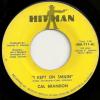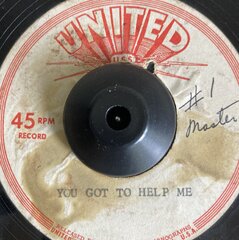- Replies 12
- Views 2k
- Created
- Last Reply
Most active in this topic
-
Tailormade Gaz B 3 posts
-
pikeys dog 2 posts
-
John Reed 1 post
-
KevH 1 post
Most Popular Posts
-
It was a way to identify cut-out records, these would be sent back to the distributers and then sold off at a discount.
-
Although many styrene records were drilled to prevent 'cash' returns, a few labels dabbed them with gold paint / gold stars / or stamped NR on the label... ABC Paramount and their distributed labels (
-
Drilled through boxes depending upon the length of the drill bit, and often the bit was that hot that it melted the vinyl, causing a back up of vinyl on the last record as they removed the drill.






Why?
Why do so many records have drill holes?
What was the purpose/function/logic behind it
Was it commonly done (on the grand scheme of things)
Was it just specific labels...was it done by the label or the distributor?
Never something I ever throught about, but I took a few records off the shelf today and out of a handful, i'd say a fair few had holes.
Edited by TailorMade Gaz B